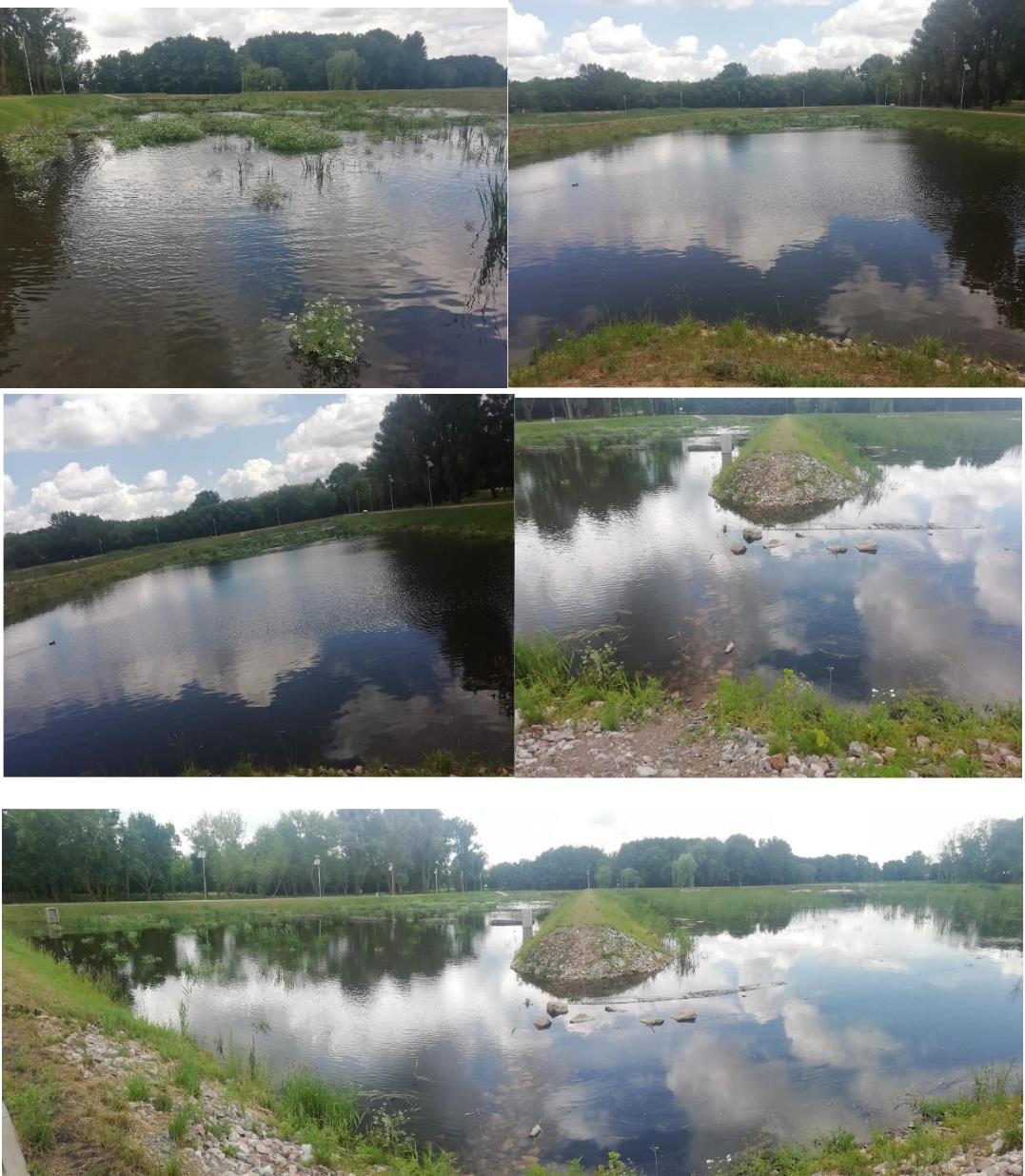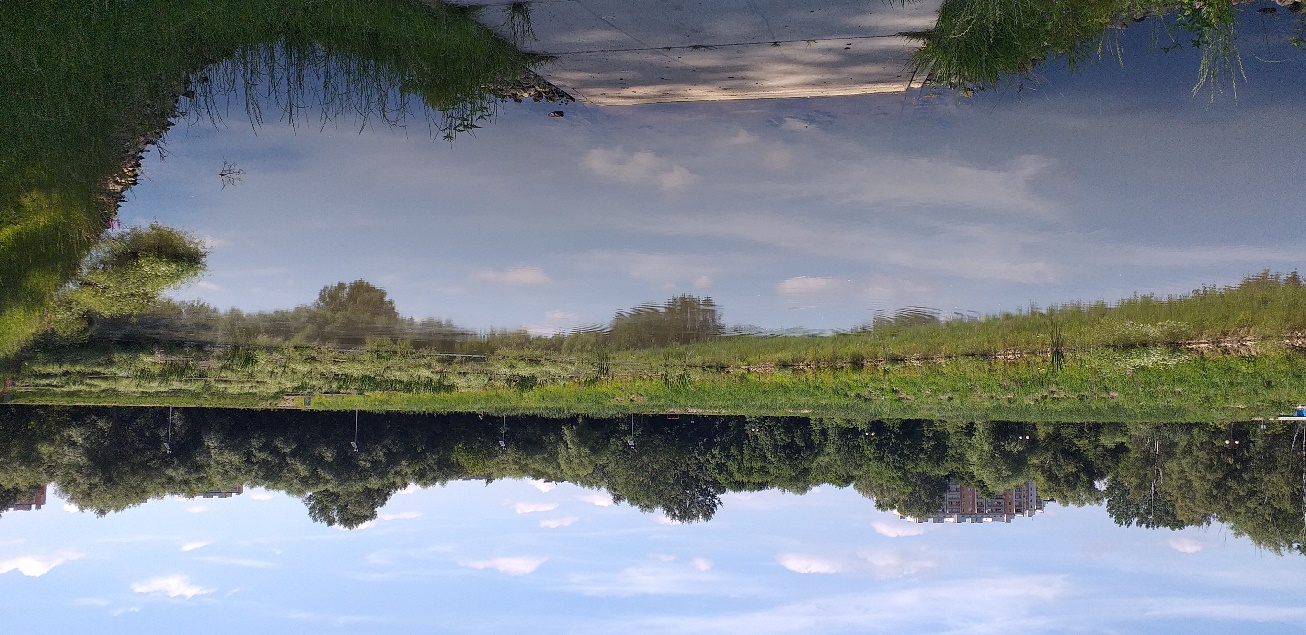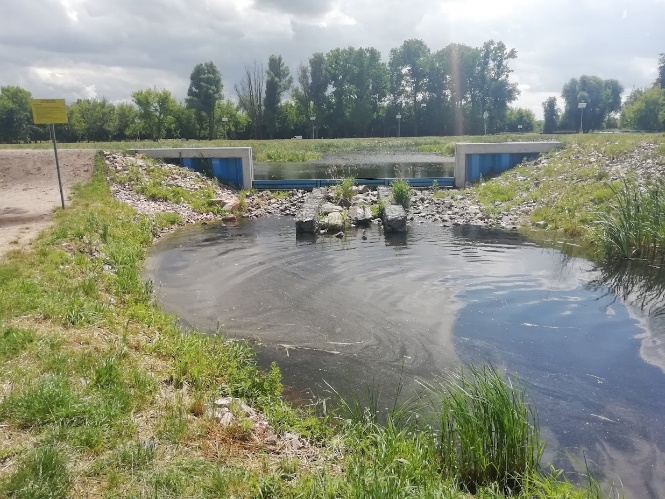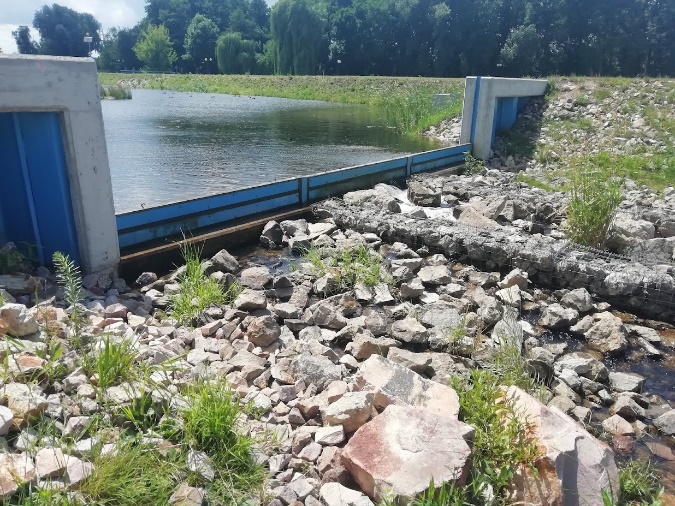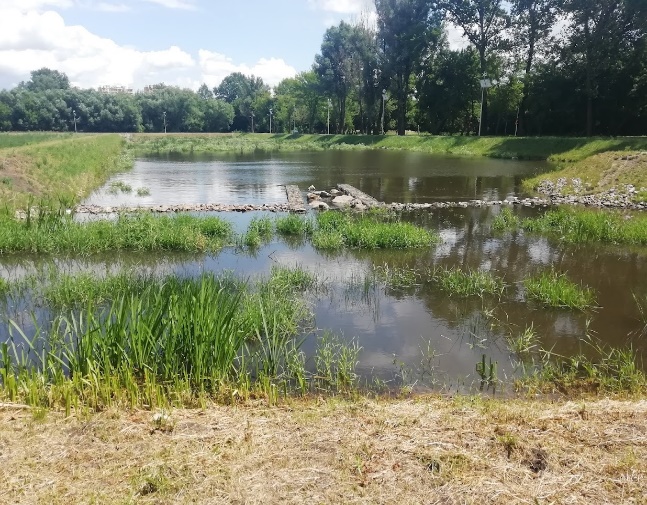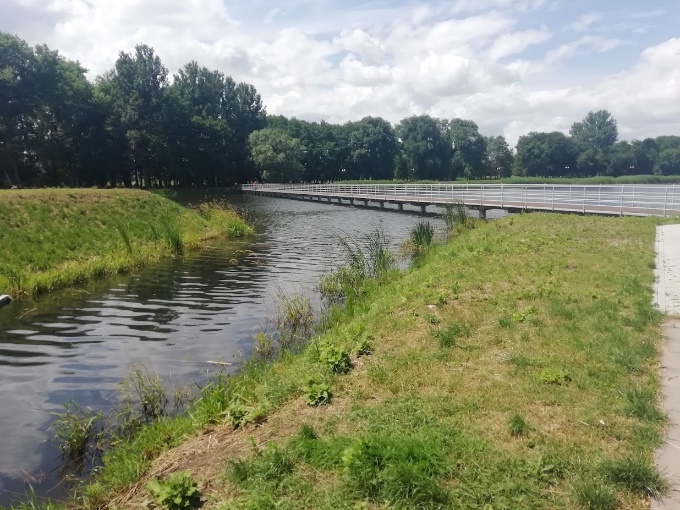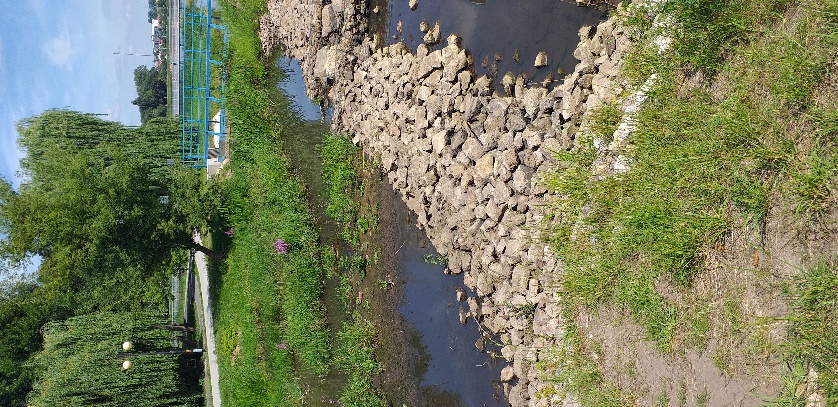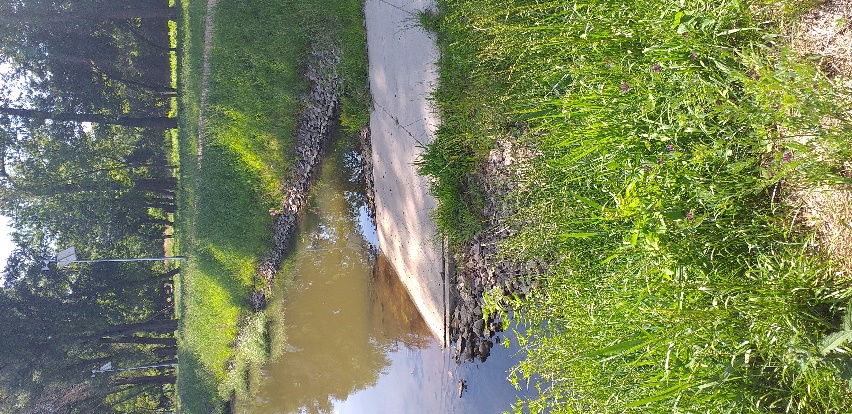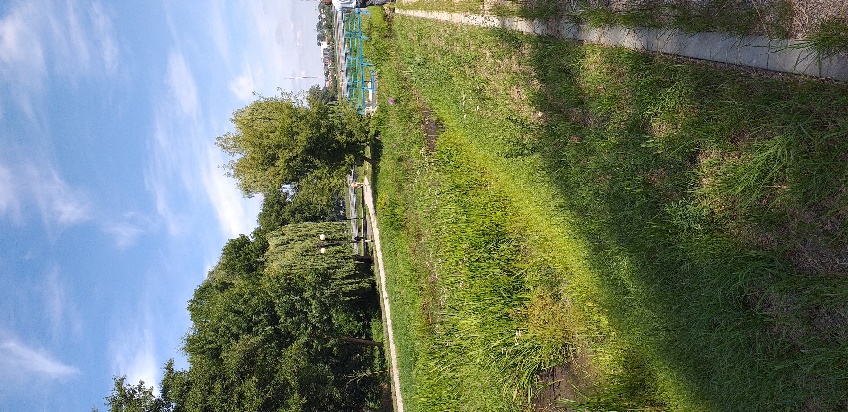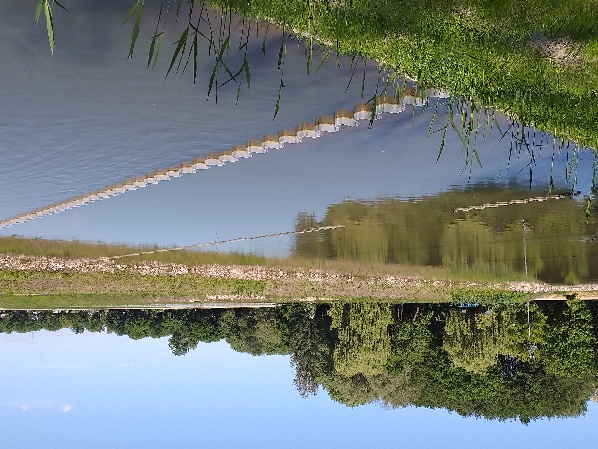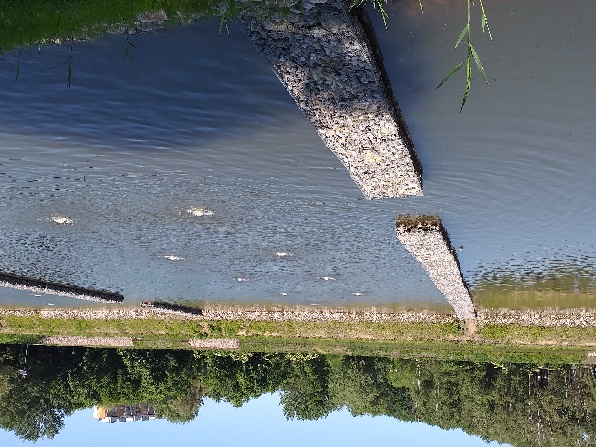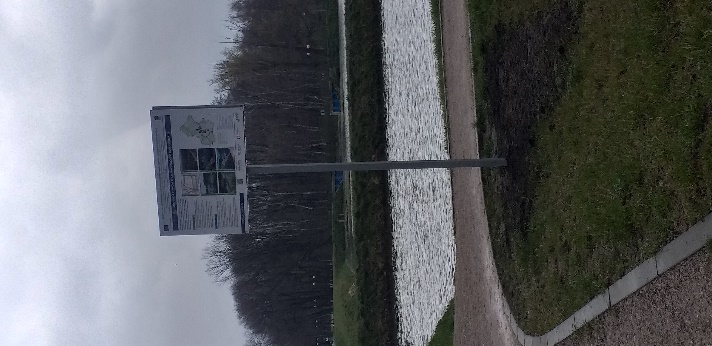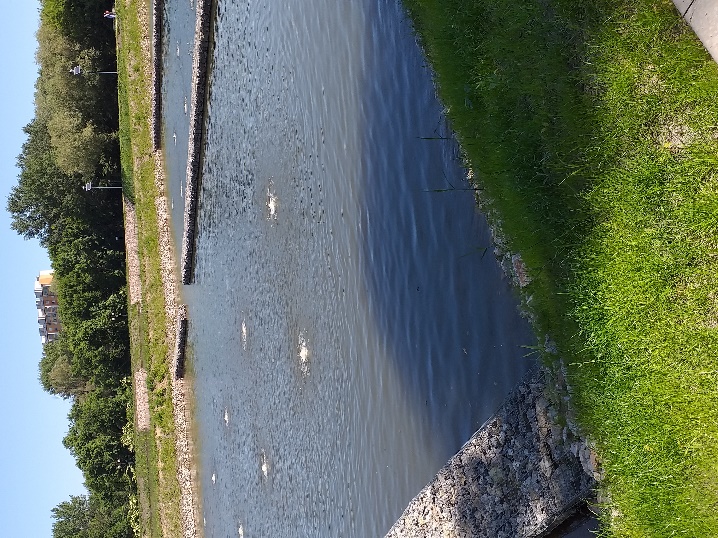Adaptation of the existing Borki reservoir and colmatation ponds to climate change
The Borki Reservoir, also known as Lake Radomskie, is the largest water reservoir in Radom. It was created on the Mleczna River and covers an area of about 12 hectares. The lagoon was built in the 1970s, and in the years 1999–2001 it was thoroughly modernized. In the north-eastern part of the lagoon there is a beach and a pier. The remaining part of the shoreline of the reservoir is overgrown with aquatic vegetation, mainly reeds and a sieve. The relatively large area of the reservoir means that numerous species of water and marsh birds can be found here. There are over a dozen species of fish in the waters of the lagoon, such as: pike, carp, perch, tench, crucian carp, roach, chub, grass carp, zander, ruff and catfish, therefore the basin is also willingly used by anglers.
Reconstruction of the colmatation ponds of the Borki reservoir is to ensure effective self-purification of waters through the use of natural processes of sedimentation of suspension transported by the river and to improve water quality by extending the flow path, using dolomite structures to increase the efficiency of phosphorus removal from water and aerating it.
Goals of adaptation of the Borki reservoir:
• increasing the flood capacity of the Borki reservoir by rebuilding the main weir,
• providing an ecological corridor for migration of aquatic organisms by building a fish pass,
• removal of sediments from the bottom of the tank,
• improvement of water quality.
Done:
• reconstruction of the main weir, which ensured an additional 20-centimeter retention of rainwater in the bowl of the reservoir during the period of heavy rainfall
• reducing the amount of water flowing through the Mleczna River during heavy rainfall to the lower parts of the city,
• construction of a slotted fish pass enabling two-way migration of fish and other aquatic organisms,
• installation of devices for aeration and mixing of water (fountains and diffusers) improving its physical properties and limiting algae and blue-green algae blooms in the water,
• installation of renewable energy devices (windmills, photovoltaics) to power the above devices.
Objectives of colmatation ponds adaptation:
• improvement of the quality of water flowing into the reservoir by increasing the pre-cleaning capacity of colmatation ponds in order to reduce the concentration of nitrogen and phosphorus responsible for the formation of algae and blue-green algae in the water,
• increasing the retention capacity of colmatation ponds by removing bottom sediments and rebuilding the trestle weir,
• preservation of habitats for organisms living in colmatation tanks,
• regulation of water flow to the Borki reservoir in order to reduce flood risk.
Completed:
• a building that dams up excess rainwater in colmatation ponds,
• a sequential system for purifying rainwater discharged into colmatation ponds, taking into account the suspension sedimentation zone, dolomite structures to remove phosphorus compounds, the water vegetation zone to reduce nitrogen compounds and aeration to limit the ingress of phosphorus from the sediment into the water column,
• removal of sediments accumulated at the bottom of sediment ponds, which were the cause of the penetration of pollutants, mainly phosphorus compounds, into the water.
Borki reservoir and main dam after adaptation
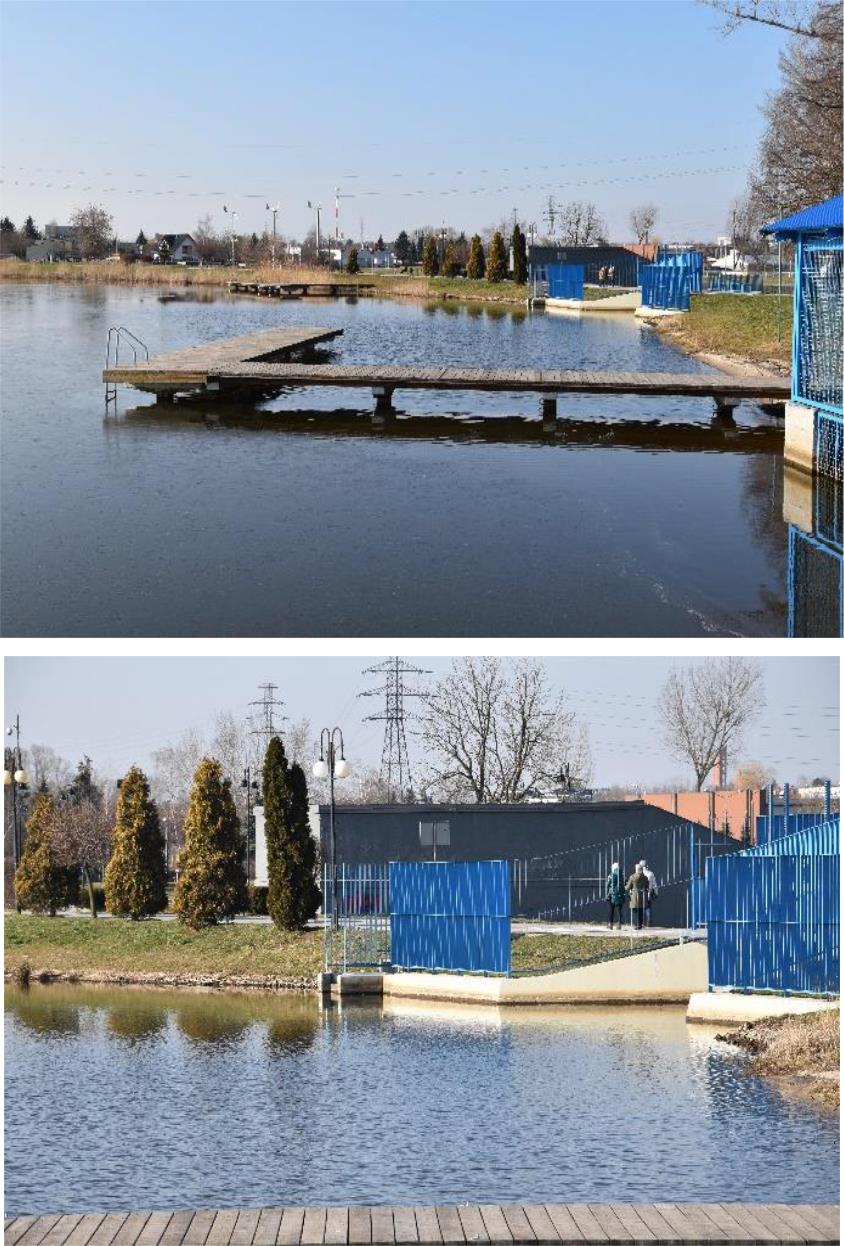
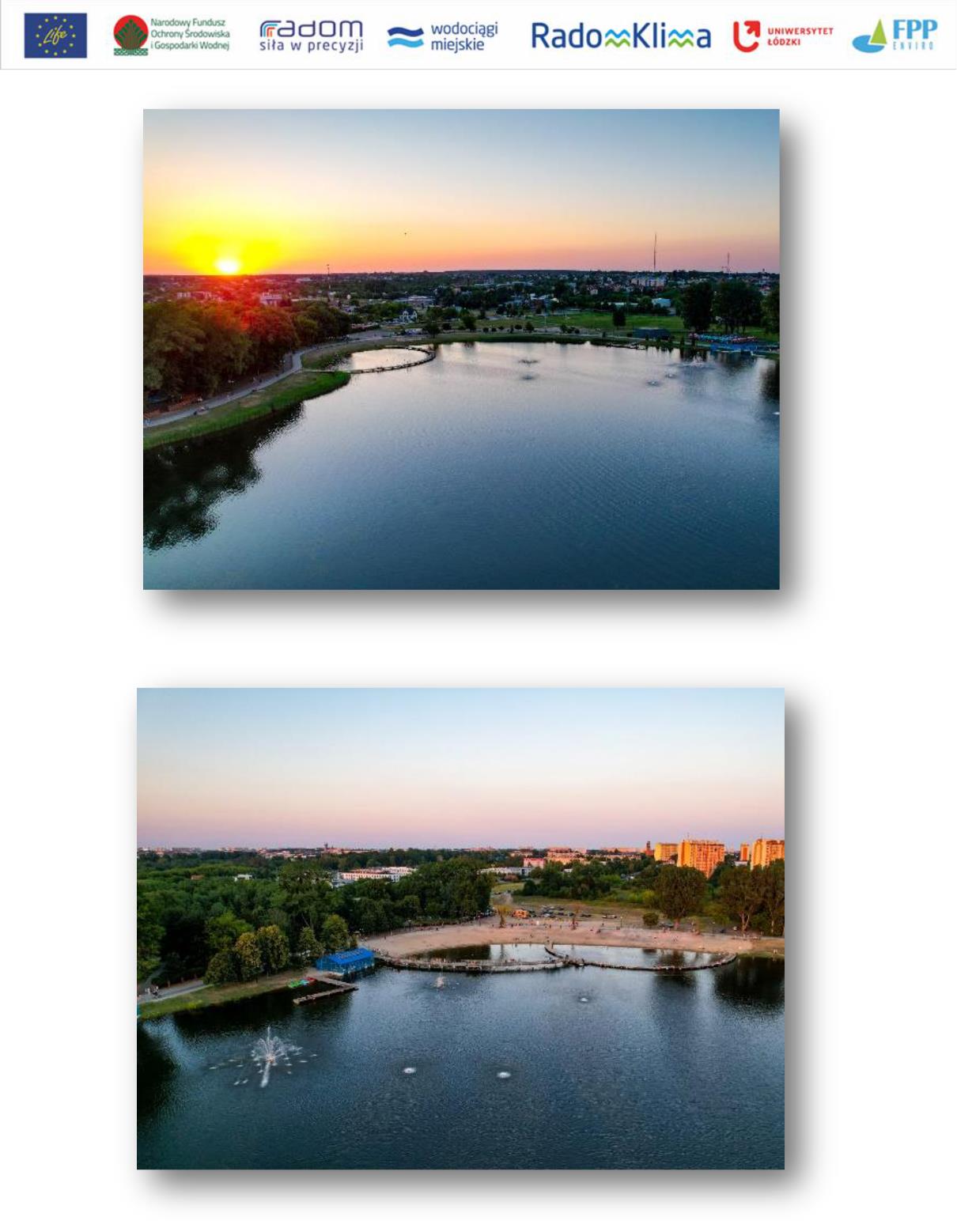
Colmatation ponds after adptation
